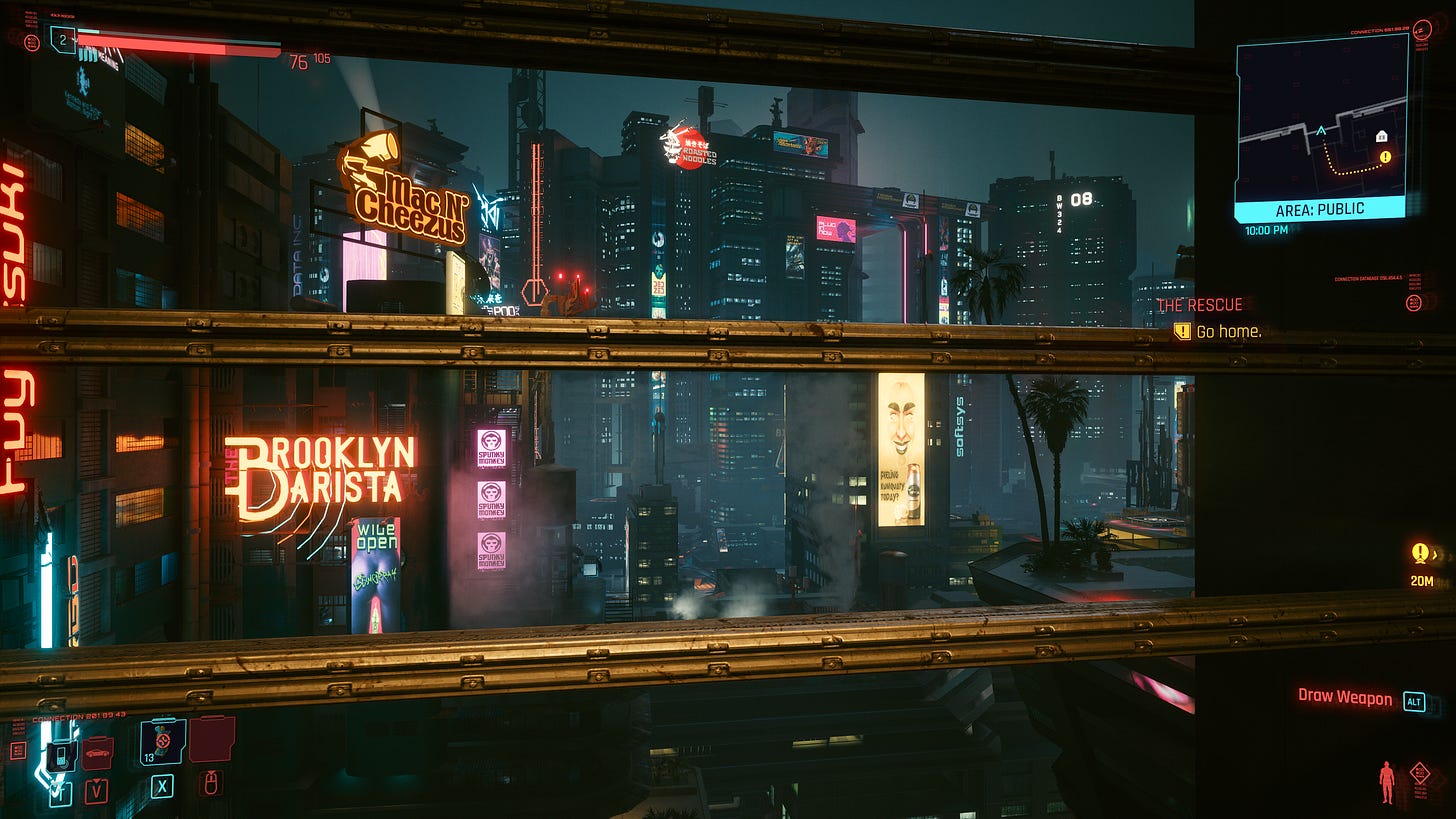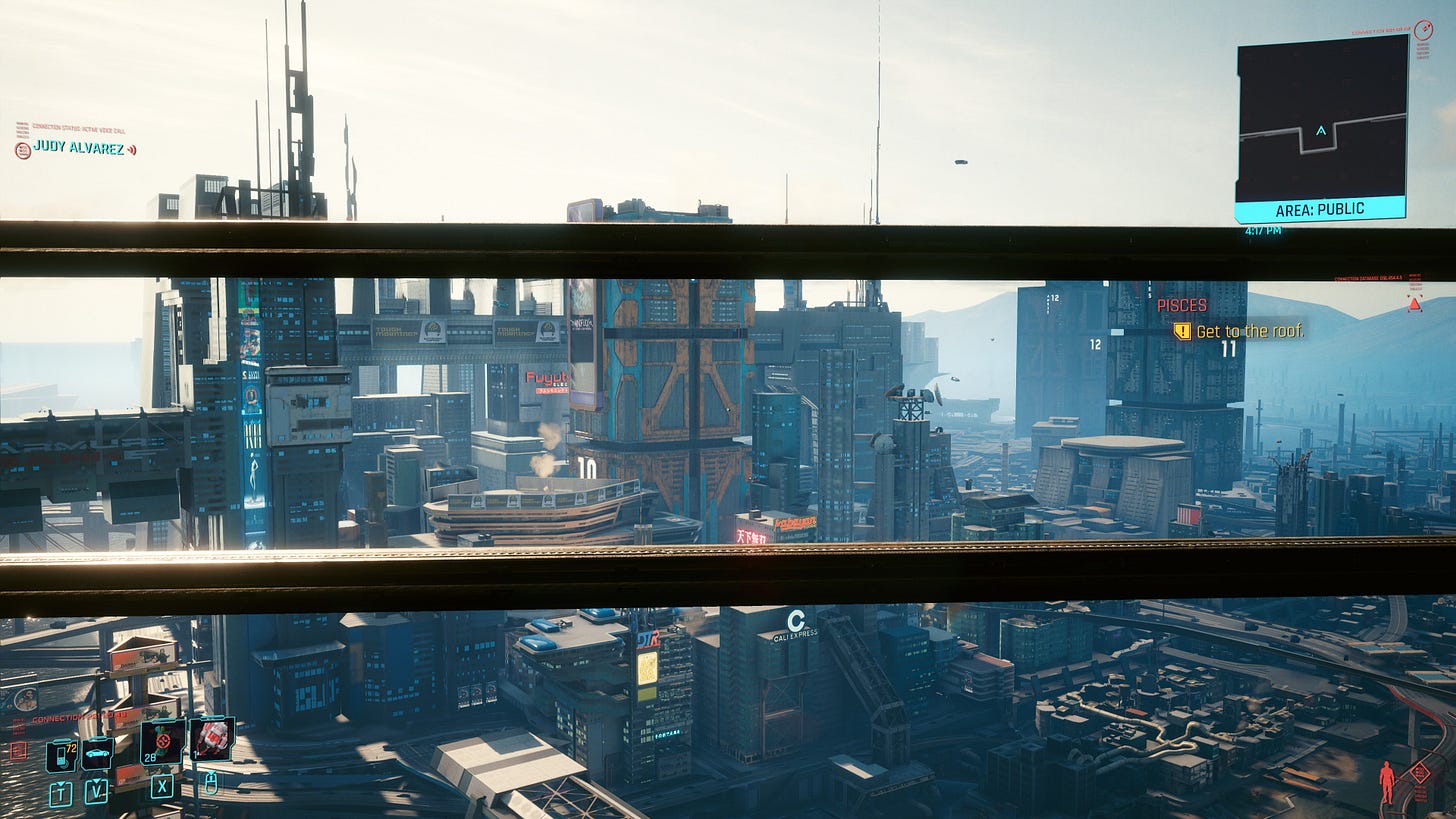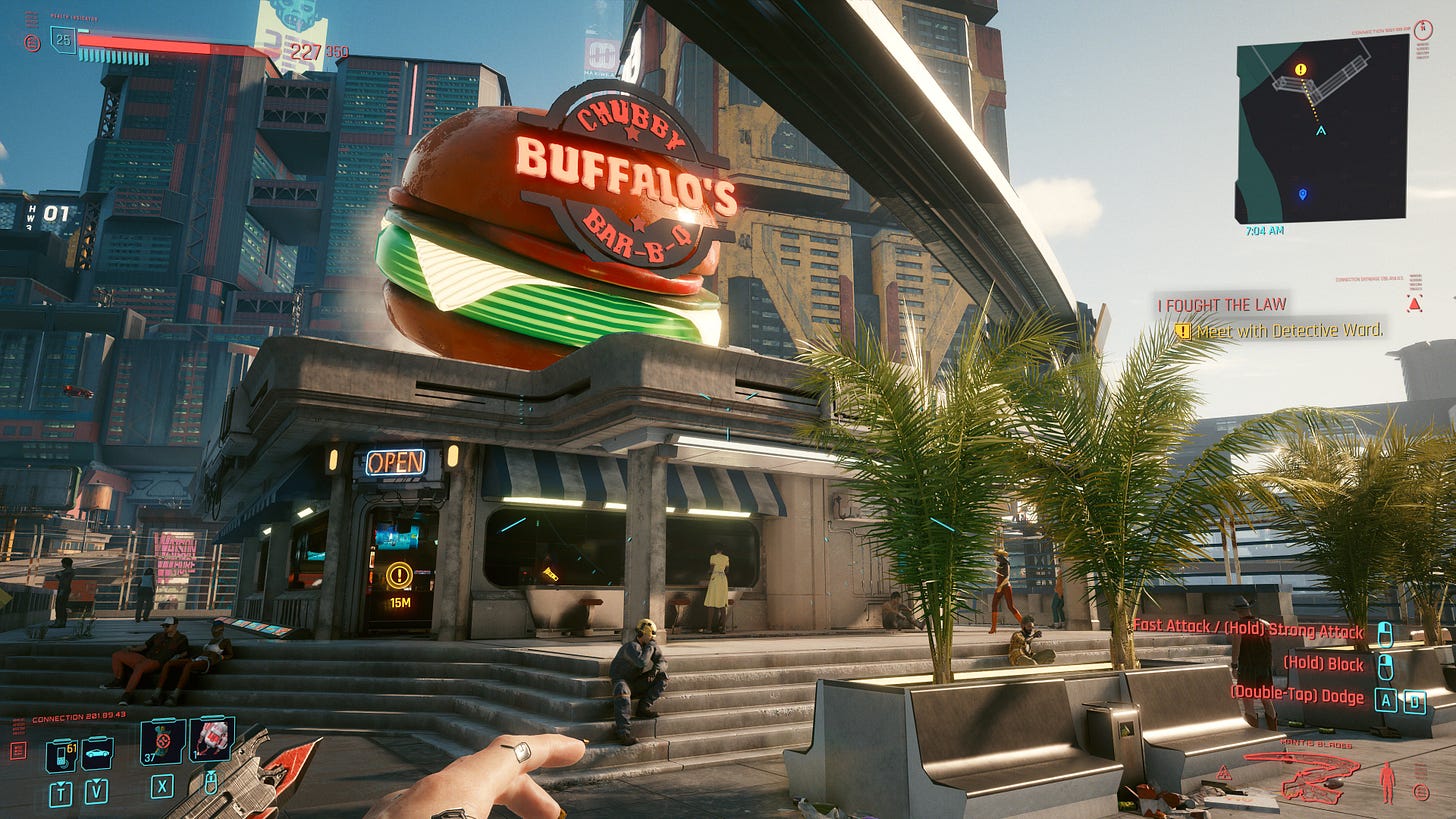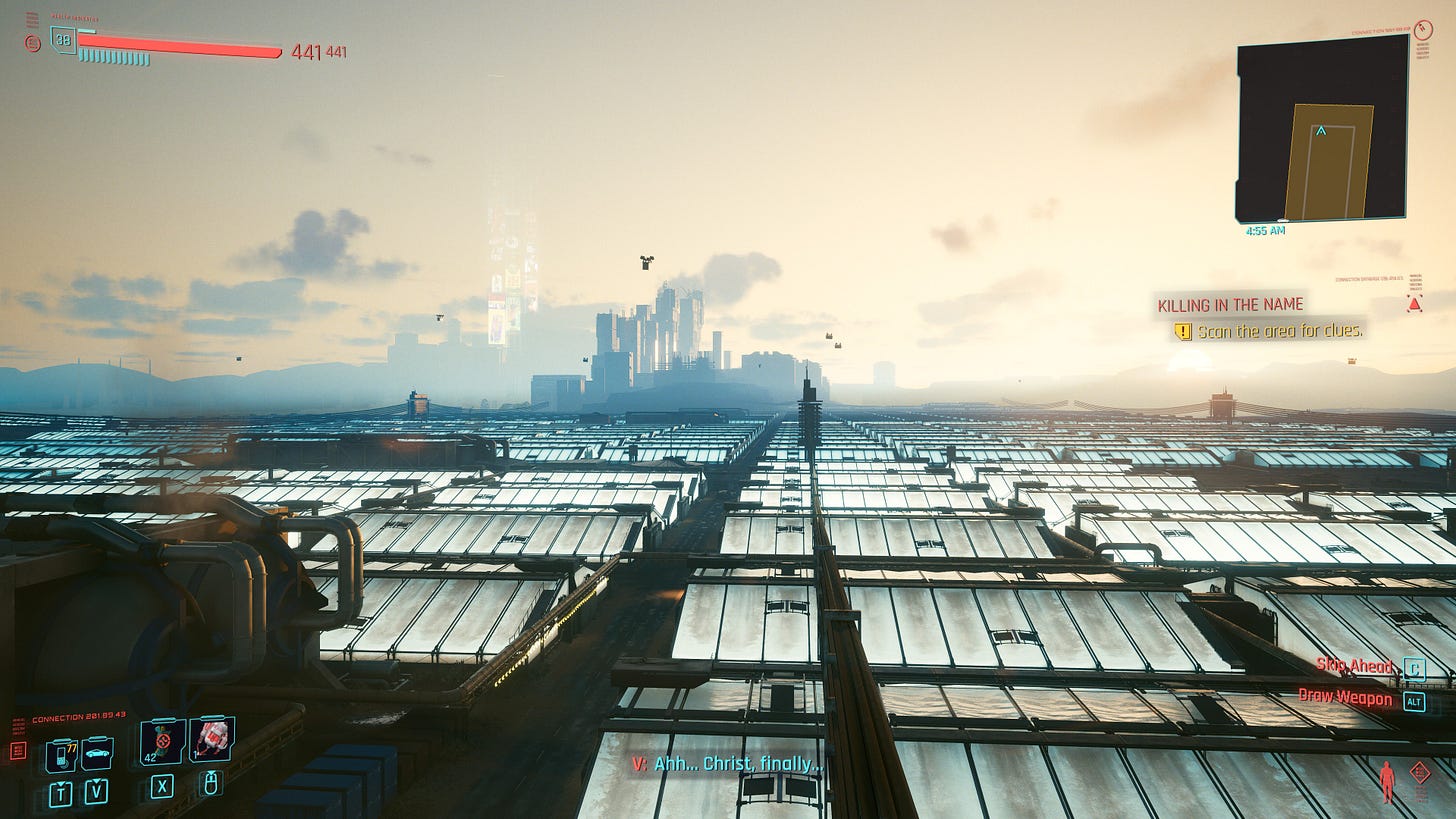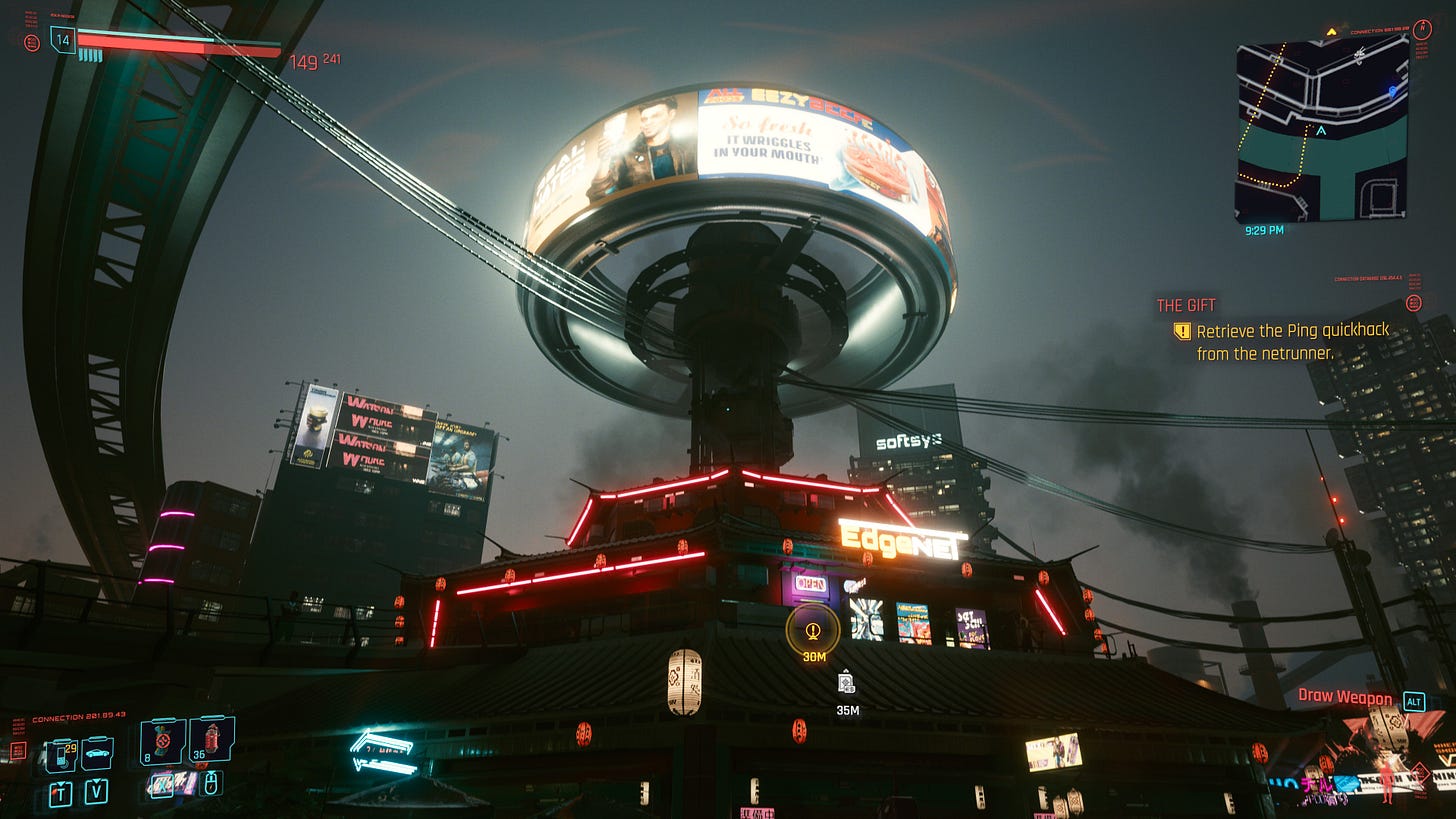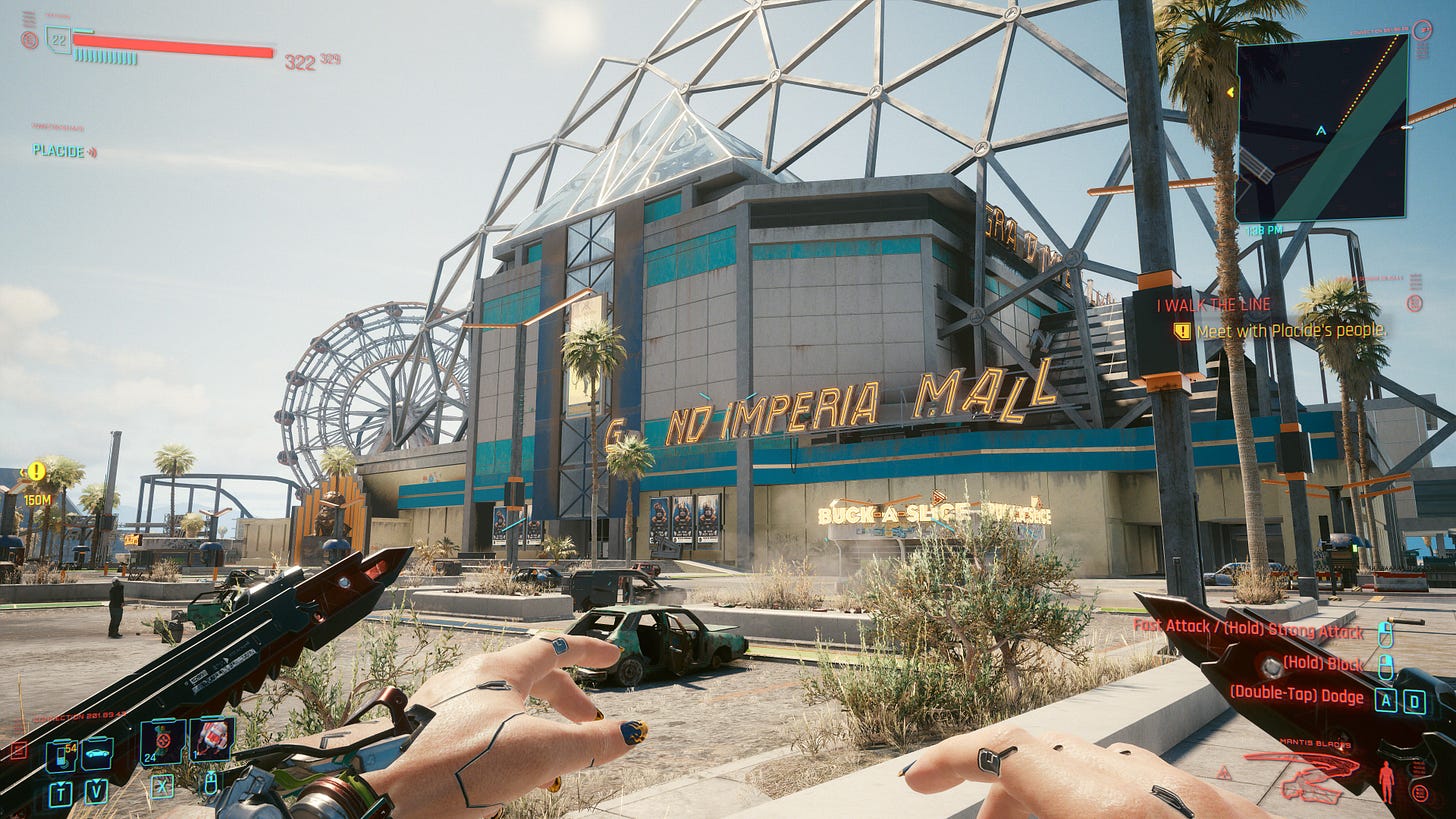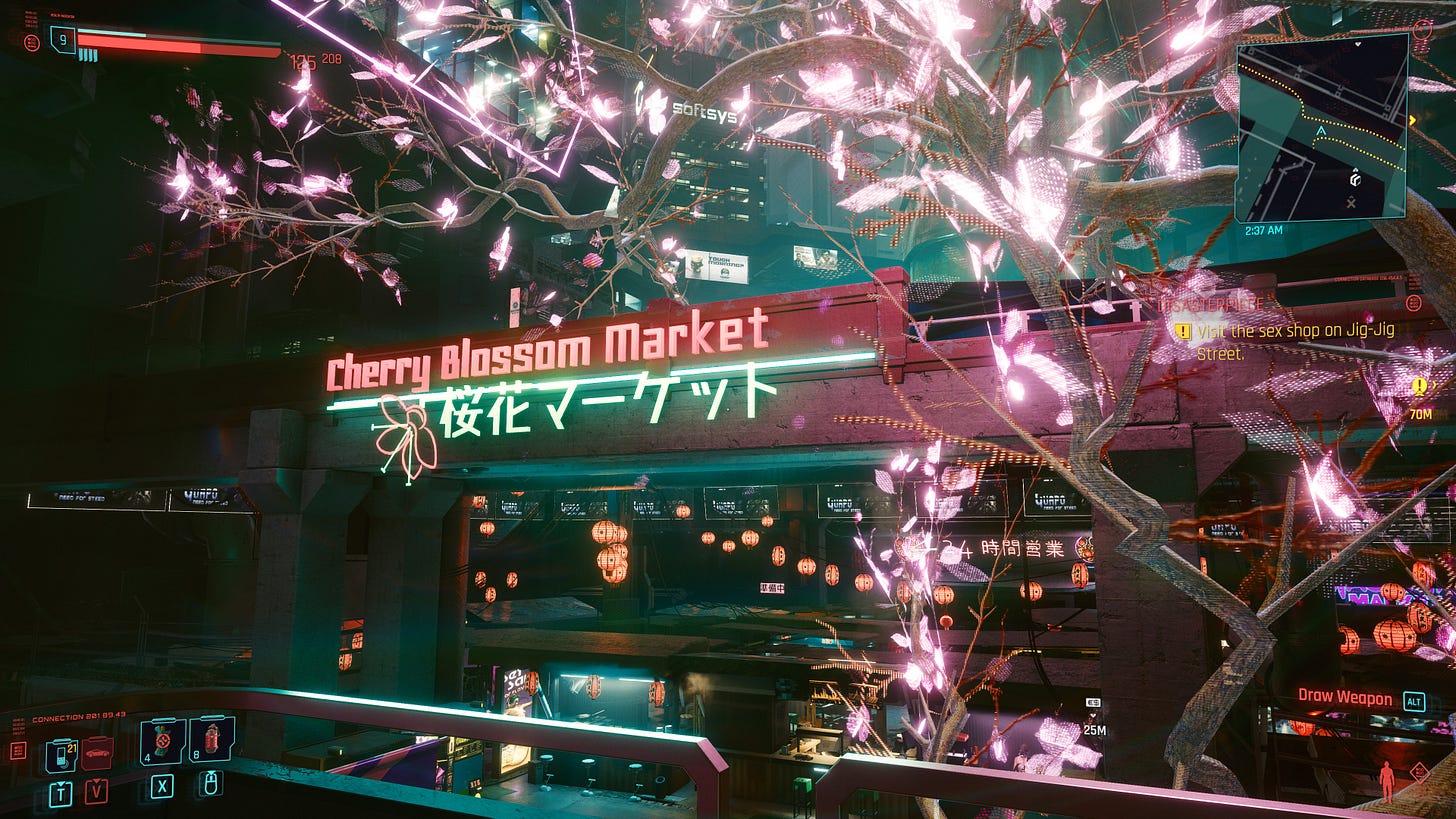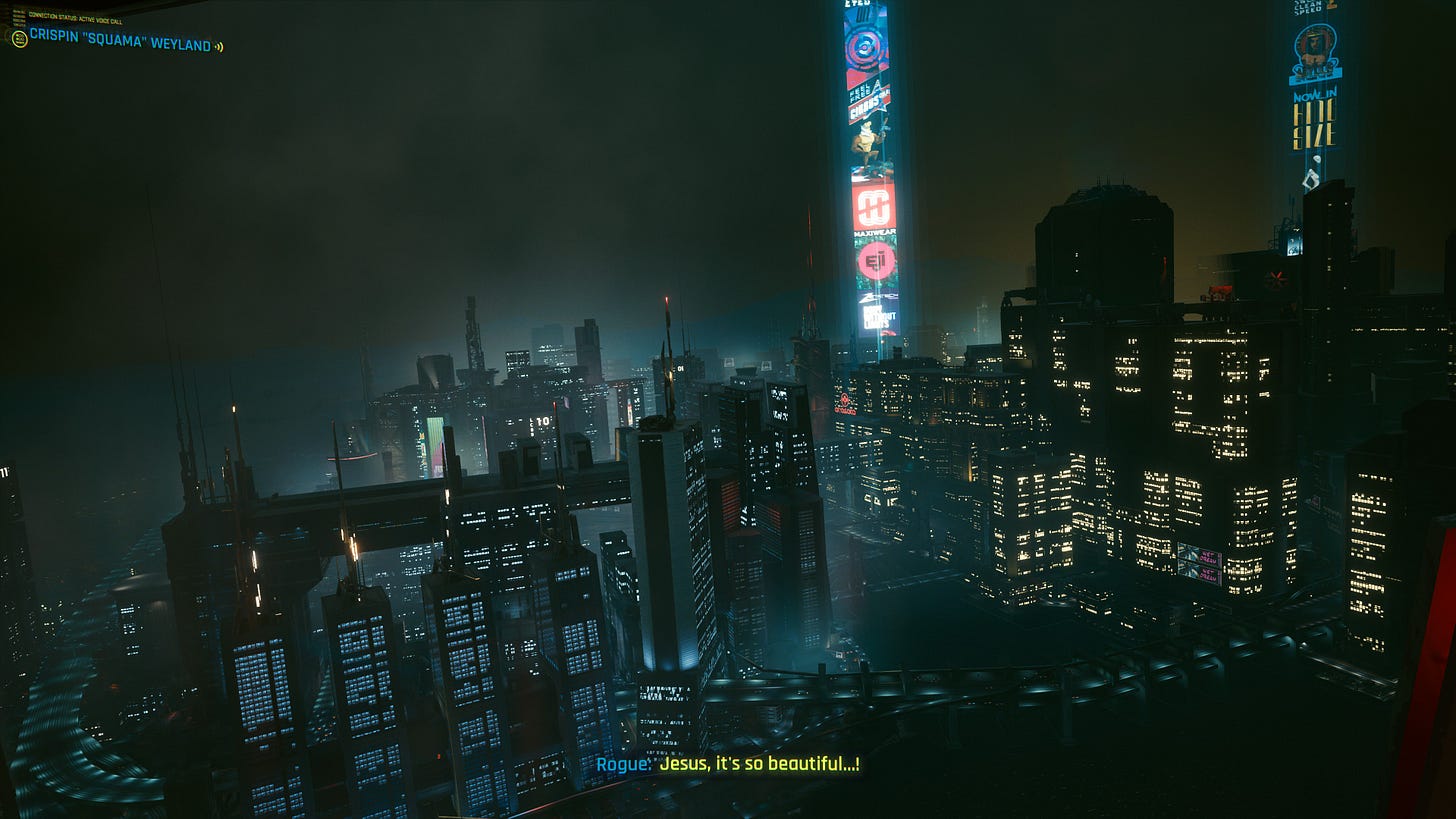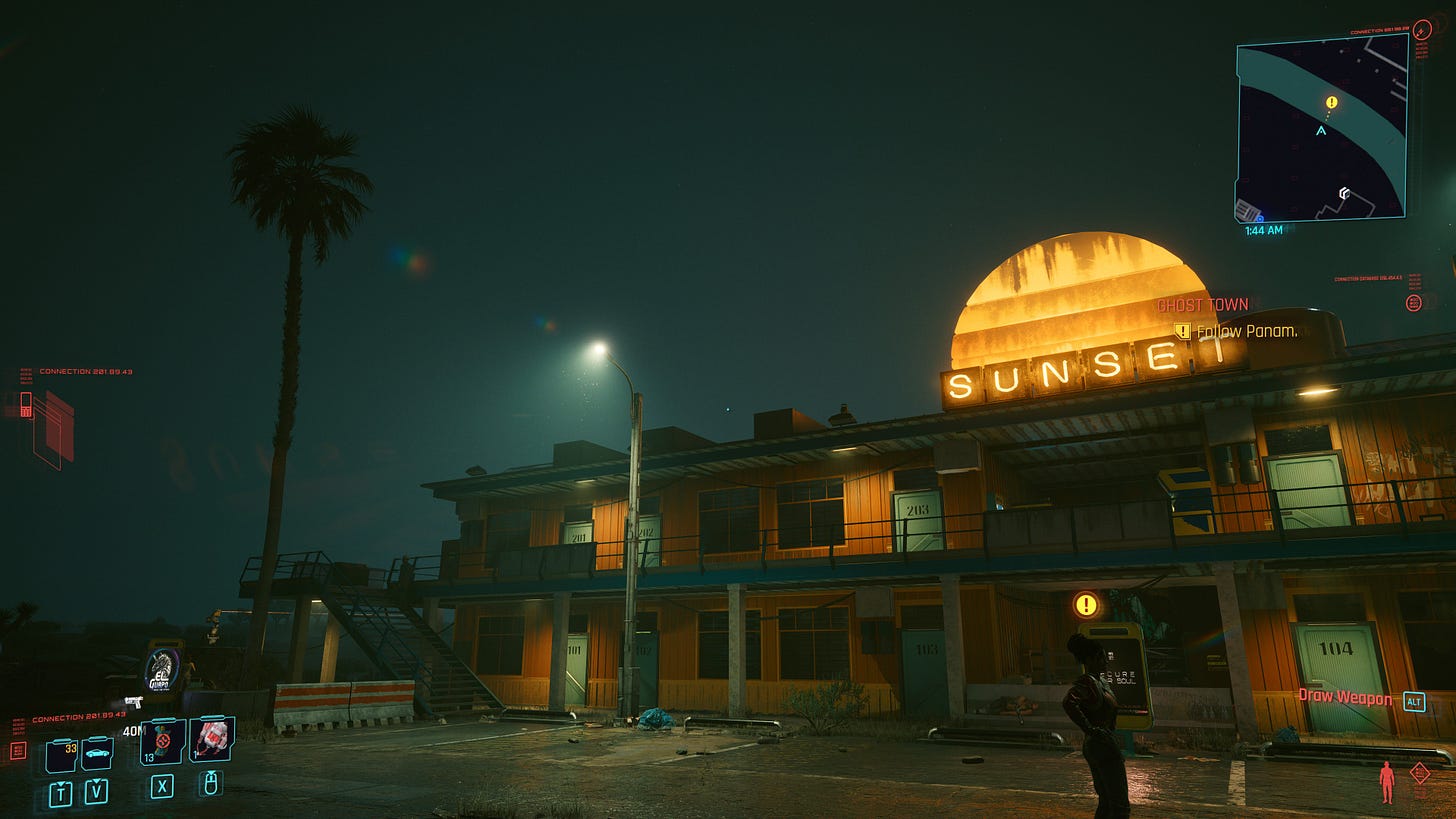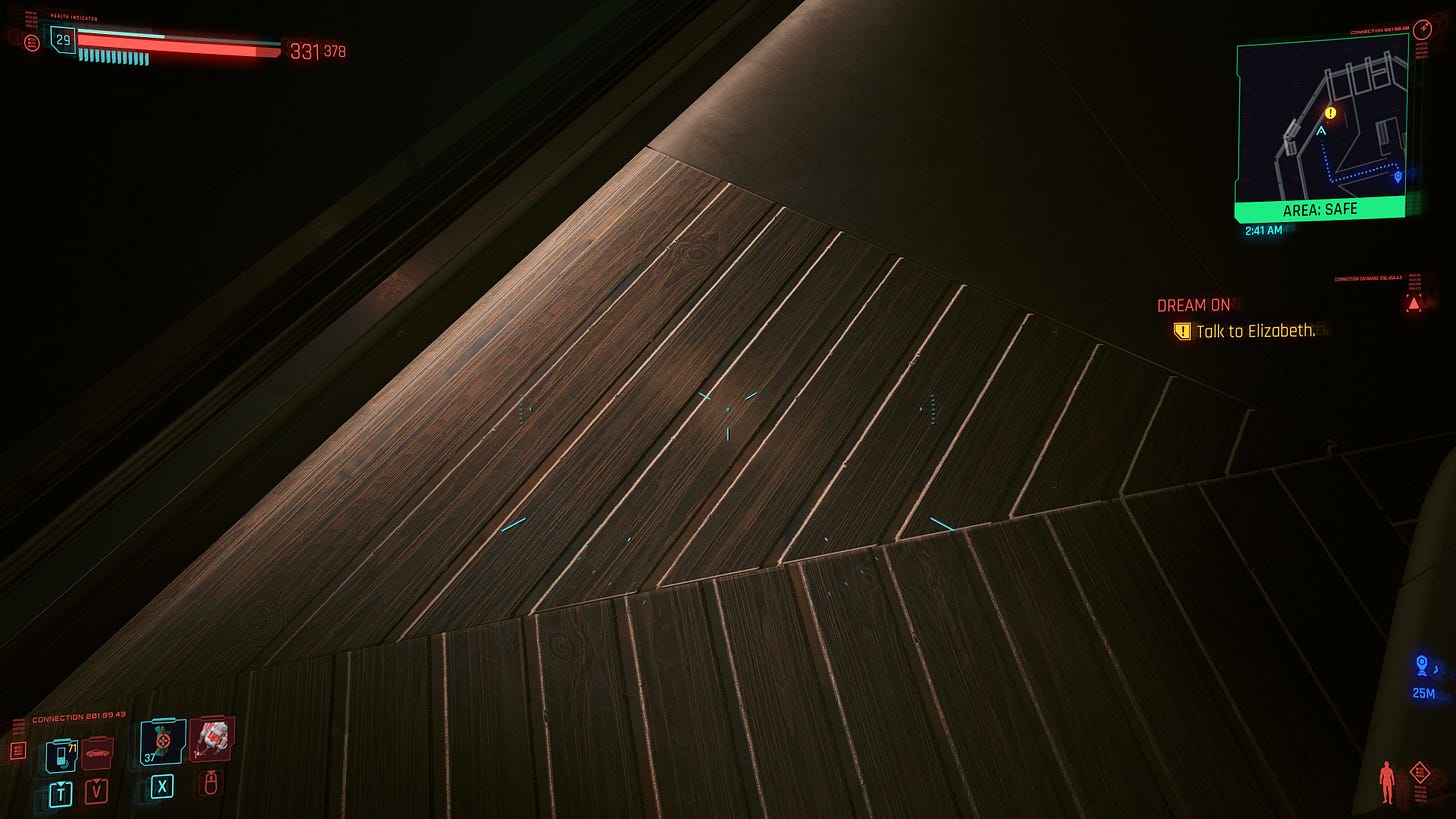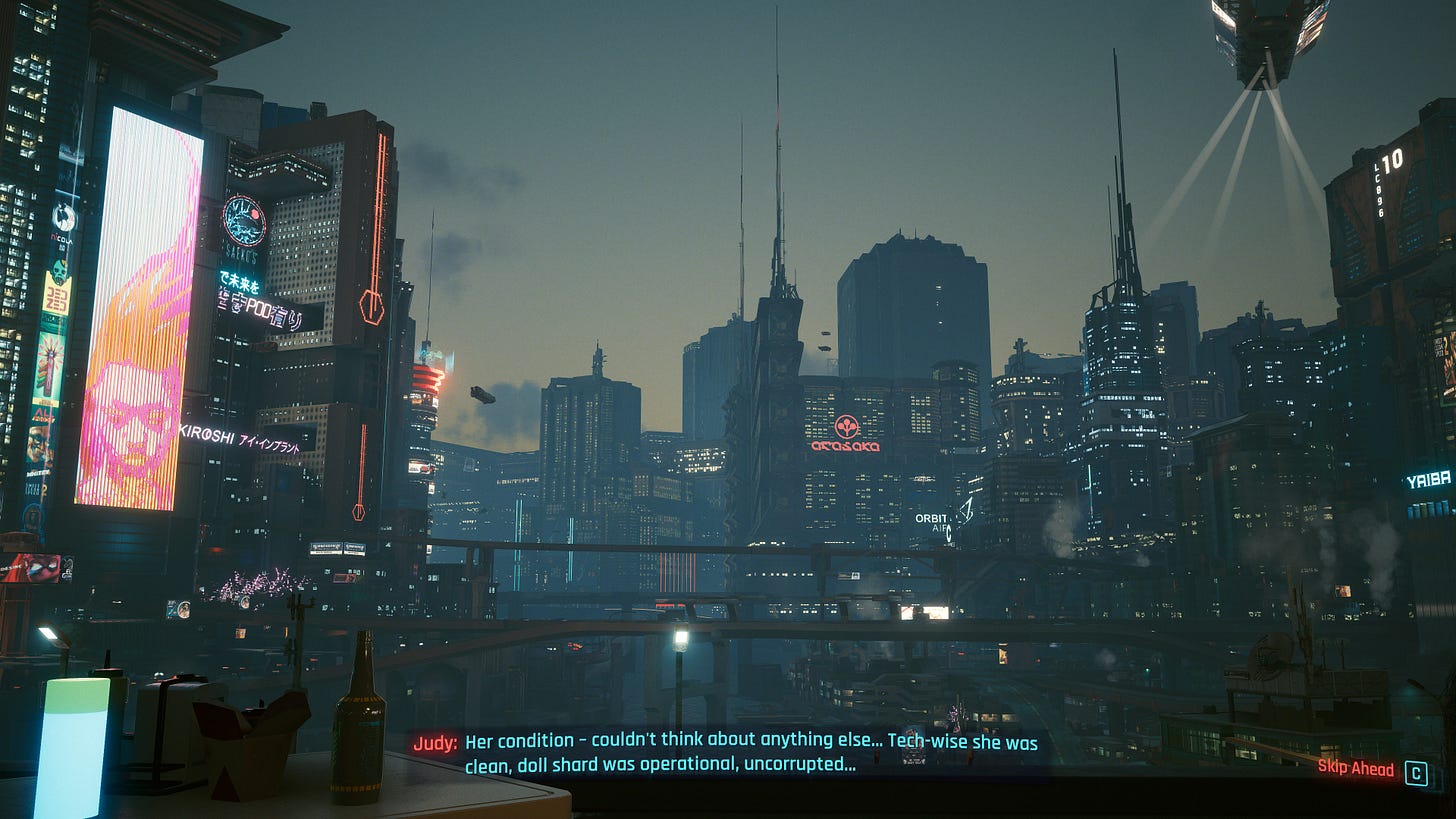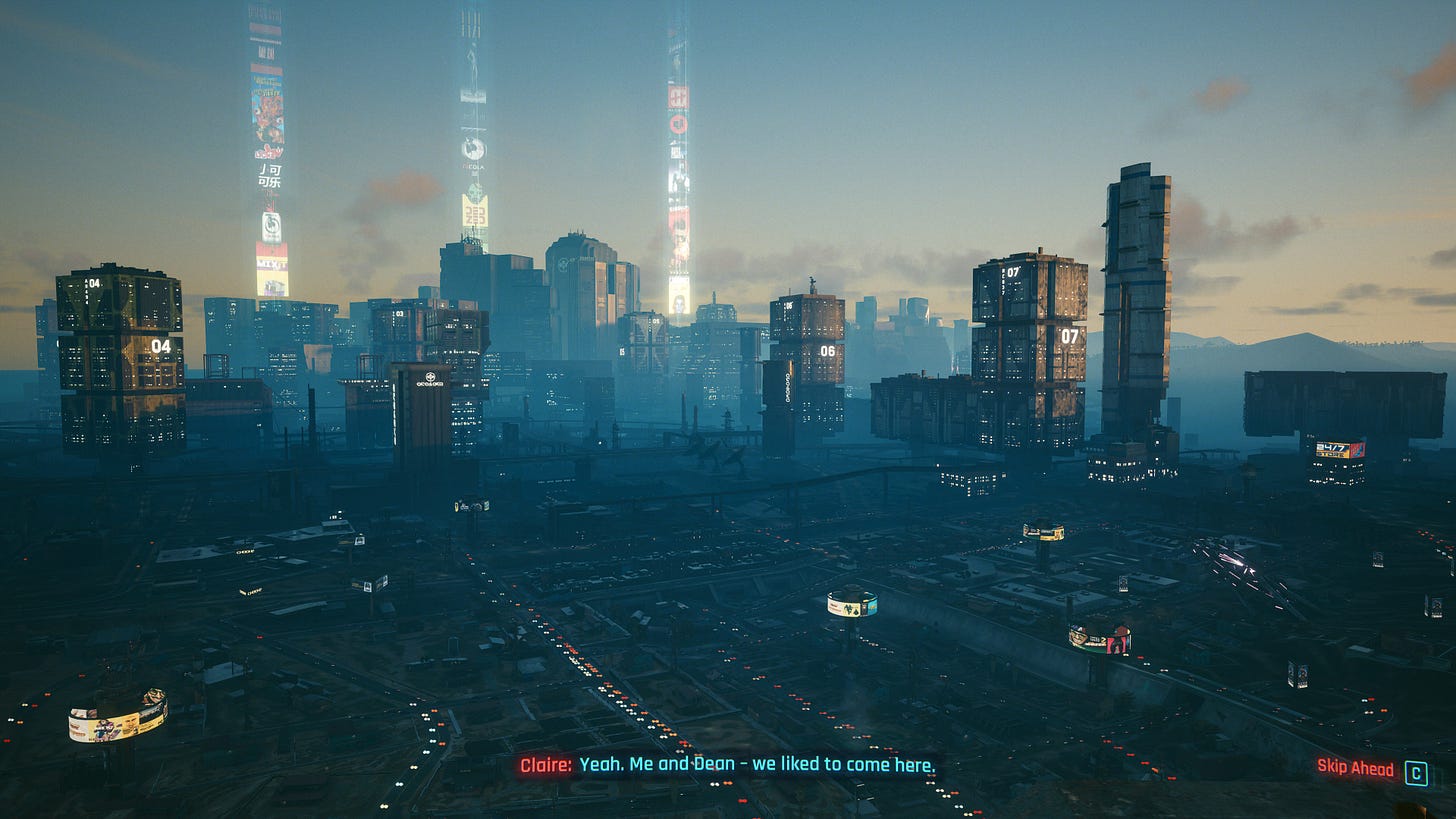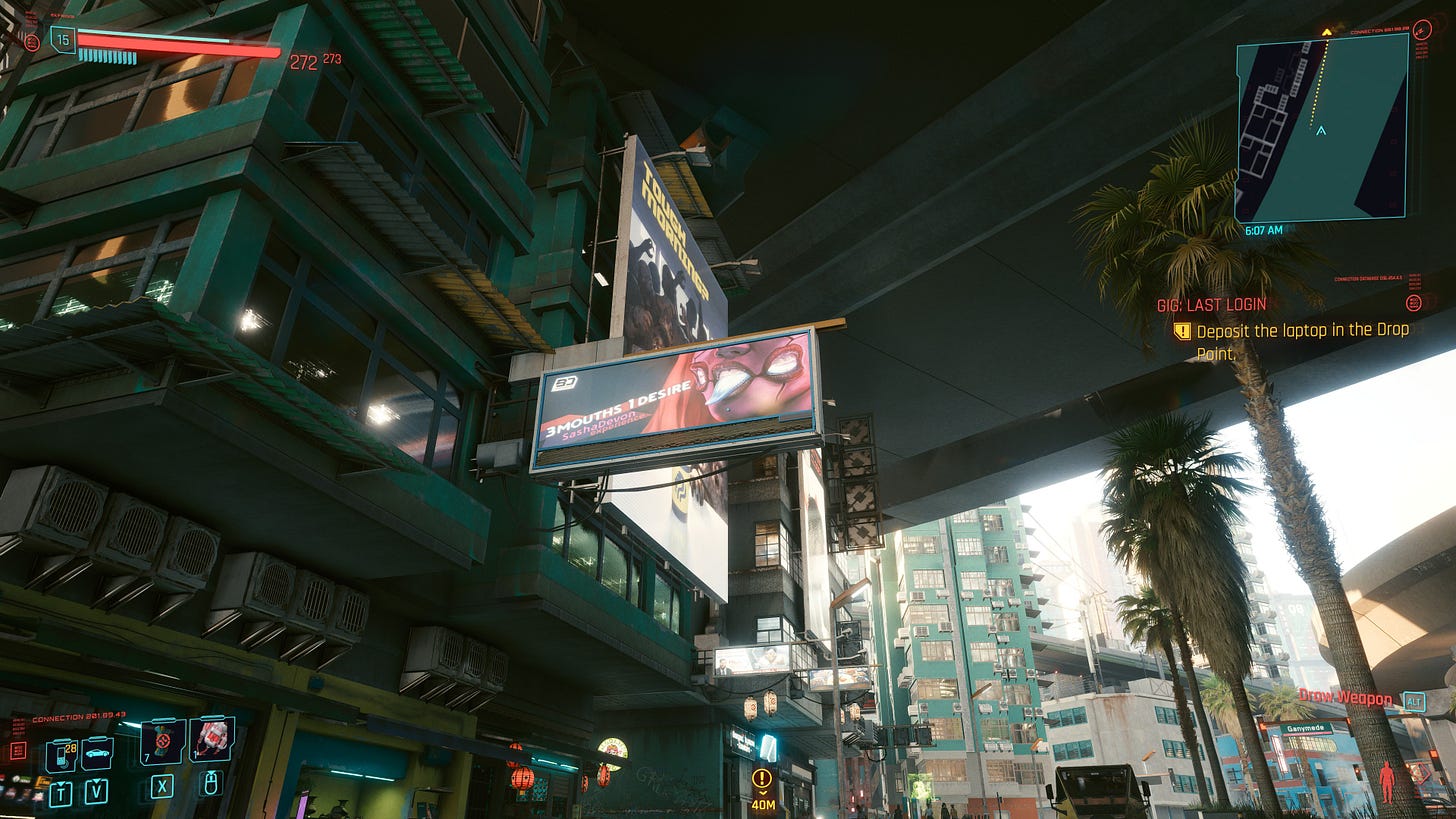In Defense of Night City: A Cyberpunk 2077 Architectural Critique.
I’ve been wanting to write about Cyberpunk for a while now. It’s one of my favorite games I’ve ever played, though I did play it on PC and several months after release to give the developers some time to fix an obviously broken game. I consider it to be a masterpiece and in my pantheon of games I hold most dear (along with Skies of Arcadia, Outer Wilds, Halo and Destiny). I have been somewhat afraid to write about it for two reasons. 1) My defense of the architecture of the game flies in the face of really well researched and valid criticisms and 2) It’s a massive game and it’s hard to write about an entire city of architecture at the scale of Night City without a history of architectural critique to build from i.e. NYC or Chicago’s history of architectural critique.
Grab a Buck-A-Slide, this is going to be a lot.
Let’s tackle some of the criticisms of the architecture first and why I don’t seem to mind them.
For a Cyberpunk game it loses the political message.
The expression of utilities doesn’t make any sense.
The rooms are oversized and out of scale.
Cyberpunk 2077 dabbles in the political implications of unabated capitalism, but I don’t think it lives there. The entire story is about losing control of your life and your own personality and faced with being erased, what type of person do you become? I don’t think this is a fair criticism of the architecture or the game direction. It feels much more like Bladerunner or Ghost in Shell than any other game and in some ways exceeds those incredible stories.
I don’t think games have to have realistic depictions of an HVAC duct. That just seems insane to expect that level of detail on a game of this scale. If it were confined to a single building then sure, make sure the return grilles are located properly, but if you are jumping from one dilapidated 4-story walk-up to another, I don’t think duct efficiency is my first priority. A second less convincing argument is that “it’s a dystopian world where they don’t care about HVAC efficiency”. Trust me, when money is tight, people aren’t going to install a second random duct to nowhere (they will barely even install the duct they need).
The rooms being oversized is… well… nitpicky, since the way the camera works and the speed of the character, rooms feel proportioned correctly even if they aren’t. It’s an interesting analysis, but is it important?
As a catch all defense for the rest of the criticisms, my response is.
I don’t care, I love it.
Cyberpunk 2077 made me feel a way I rarely feel in video games. The entire atmosphere of every neighborhood felt unique yet connected with the others. As someone that cares deeply for phenomenology in architecture (I’m a huge Zumnut, a name I just made up for Peter Zumthor fans), I recognize that crafting an intentional atmosphere is one of the most important and difficult things that architects do (along with making sure the buildings don’t leak or fall down in a few years) and I rarely think that video games succeed at this aspect. In the last year I can count maybe 2 or 3 that did an amazing job of this, but the scale is much more confined and detail oriented. More often than not architecture is reduced to level design with cool details on platforms, the exact practice that Modernist architecture was created in response to (which brought in a whole new set of problems like cheaply built and badly designed architecture under the guise of “monumentality” and “machine for living”).
Cyberpunk crafts a “cog in the machine” feeling of Bladerunner 2049 perfectly, and it expands on it. Imagine if you could get a detailed look at the rest of Los Angeles in Bladerunner. That is the feeling of Night City.
Do you want to see where the corporate plaza where these monsters controlling your life are? You can go right in to the plaza or you can spy on them from afar.
You want to see the cool burger diner that serves your favorite synthbeef patties? Check out the giant neon burger sign at Chubby Buffalo’s.
Want to see the insane greenhouse farms in the desert? Wow, what a view!
The industrial neighborhood where your rockstar buddy grew up? check out the awesome rotating billboard.
For the mall architecture wonks out there. They have you covered with the always solid “G ND IMPERIA MALL” complete with a mediocre interior fountain and half a geodesic dome.
The San Fransokyo vibe? Got it.
Vertical billboards shooting above the city like an Albert Spear nightmare scenario? Got it.
Seedy Desert Modern hotel? Got it.
Run down Japanese Metabolism? GOT. IT.
Cyberpunk doesn’t ONLY have all these buildings, but it allows them to occupy fairly believable neighborhoods. Are they perfect complete neighborhoods? Of course not. There are still issues of downtown highways dividing neighborhoods and consolidation of polish in specific neighborhoods, but that is literally the world we live in now. In Columbus our low income and high income neighborhoods are divided by are frustrating downtown infrastructure, none of which connects neighborhoods.
I won’t lie, the detail of some of the spaces completely took me out of my immersion. As an example, there is a famous politician that you get to visit and in their deluxe apartment the material doesn’t line up. What kind of designer would allow this? Seriously, for the money they paid for the apartment, get the damn planks to line up. (Sorry for triggering anyone that has had to fight with rendering software).
These inconveniences are so worth it when you compare it to the incredible layering of the urban skylines. Night City isn’t a bunch of random villages or neighborhoods that have nothing to do with each other. It is a beautiful mess of urban scale. It is an urban undertow that won’t let you up for air until you’ve become a Night City legend, and even then, Night City moves on.




